

“Rangda” - Balinese Mask
This mask in Balinese culture is intended to resemble a wife’s soul when she follows her departed husband to the netherworld. “Rangda” personifies the dark side of the universe. The struggle between the good and dark forces continues eternally, just like good and evil will always coexist. The Balinese believe that disease and misfortune are the results of an imbalance between the forces of good and evil.

Wooden Batik Mask
Batik is a pictorial fabric that is specifically made by writing or printing on a cloth piece using special methods. Then processing it to have a particular trademark. The UNESCO has recognised Batik as an Intangible Cultural Heritage of Humanity since October 2, 2009.
Besides clothes, Batik can also be applied on woods. One of the wooden Batik product is Batik Mask. Artistic patterns and traditional Batik methods creates a nice handicraft mask – Wooden Batik Mask.
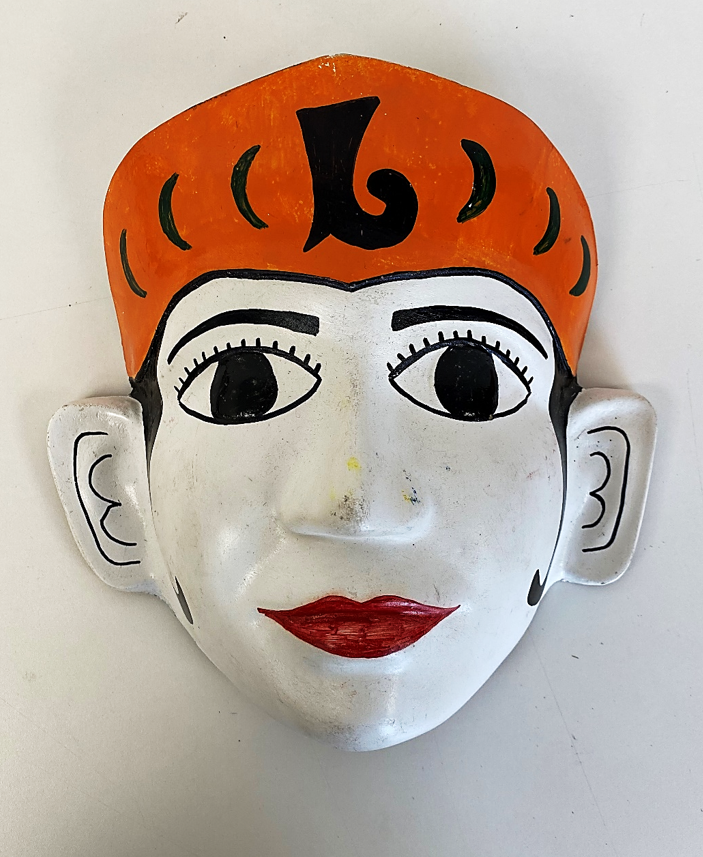
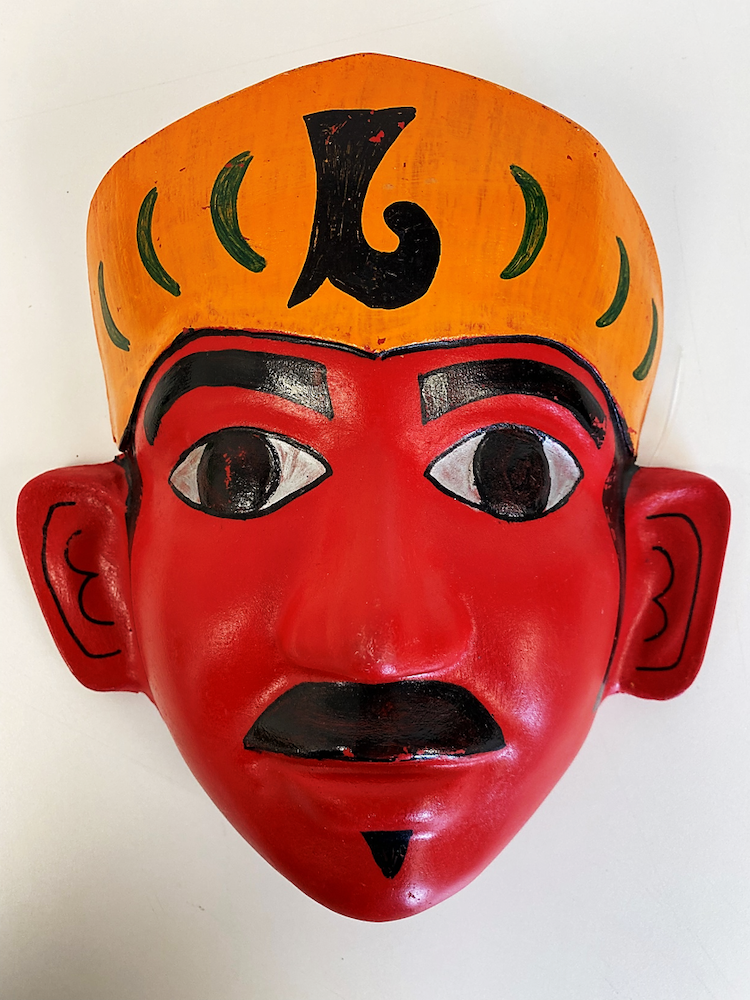
Topeng Betawi Mask
The Betawi Mask dance had some social functions in Betawi society. In the past, Betawi people believed that Betawi Mask dance can keep them away from dangers, diseases and disasters. Nowadays, Betawi Mask dance is performed as a part of occasion. In the performance, musical instruments such as “Rebab”, “Gong”, “Kendang”, “Kempul”, “Kulanter” and “Kecrek” are played.
White Betawi Masks usually symbolises the mellowness of women which is marked by the gentle movements of the dancers. Whereas the red Betawi Masks symbolizes arrogance and strength.

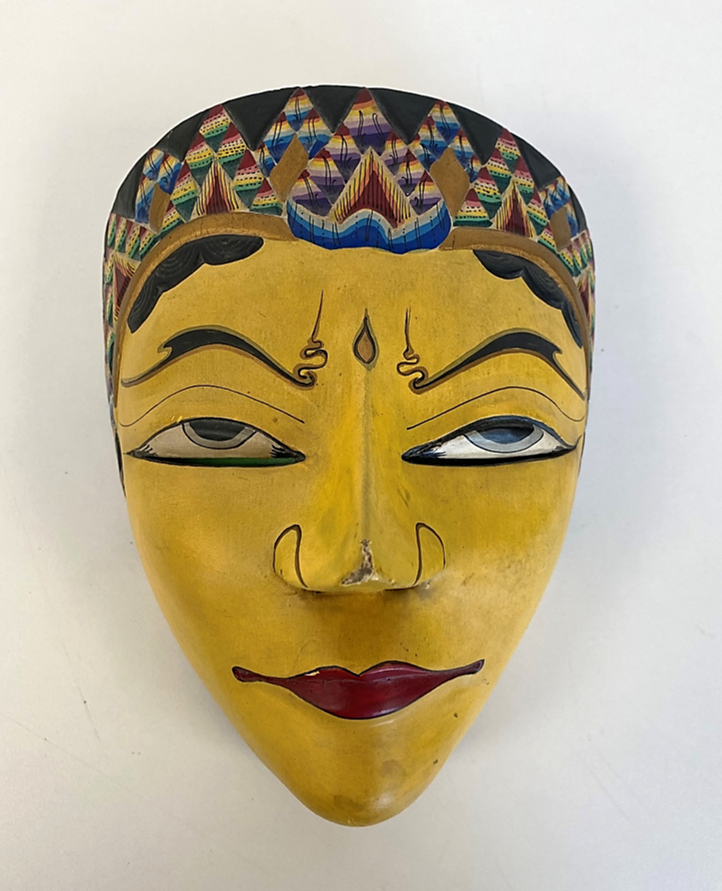
“Gunung Sari” - Javanese Mask
“Gunung Sari” is the embodiment of a knight as well as the son of the king of the kingdom of “Jenggala Manik”. His physical characteristics are slanted eyes, long mustache and a golden dot on his face.
“Gunung Sari” is an image of kindness and always has a cheerful expression. It is a character who can create a friendly atmosphere.

“Samba” - Topeng Cirebon Dance Mask
“Samba” is from the word “Sambang” or “Saban” meaning “Every”. The Samba Mask has a philosophical meaning that humans must be introspective because there will always be temptations and invitations that will lead to evil or negative things.

“Kelana” - Topeng Cirebon Dance Mask
The “Kelana” Mask describes someone who likes to wander to find his true self. “Kelana” is a character full of dynamics of life. Living is like traveling. There is a beginning and an end, there is life and there is death. The color of “Kelana” mask is usually dark red, which shows a proud and cruel character, wide eyes, grinning mouth, circular mustache and a beard.
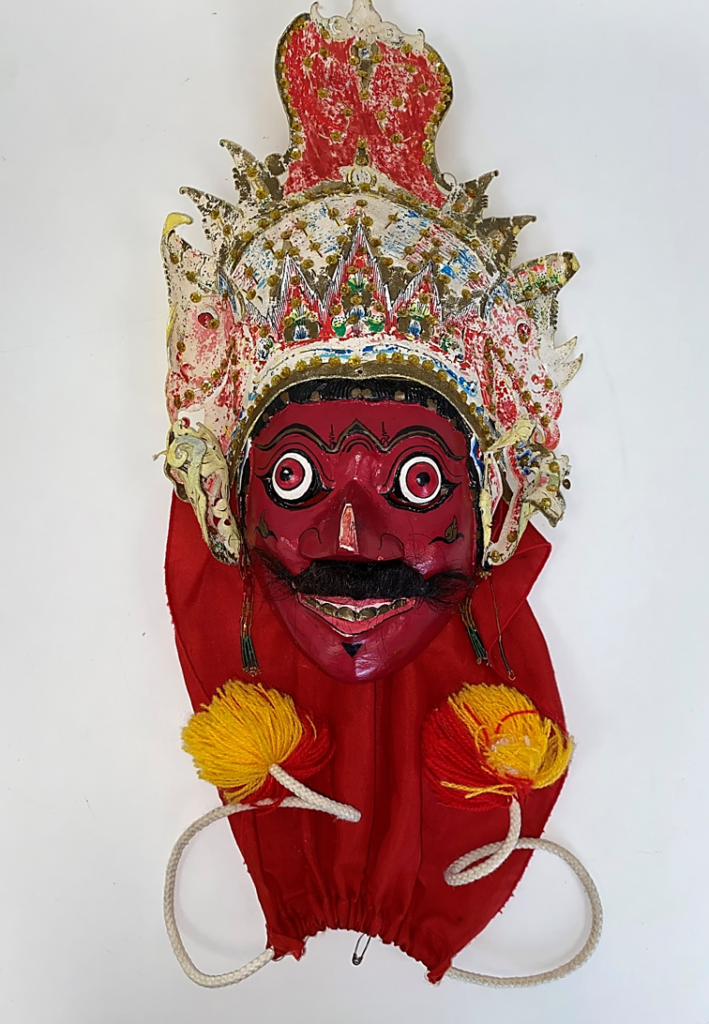

“Tumenggung” - Topeng Cirebon Dance Mask
Has a red face, long nose and big eyes. The color of the face of symbolises his tempered and brave nature.
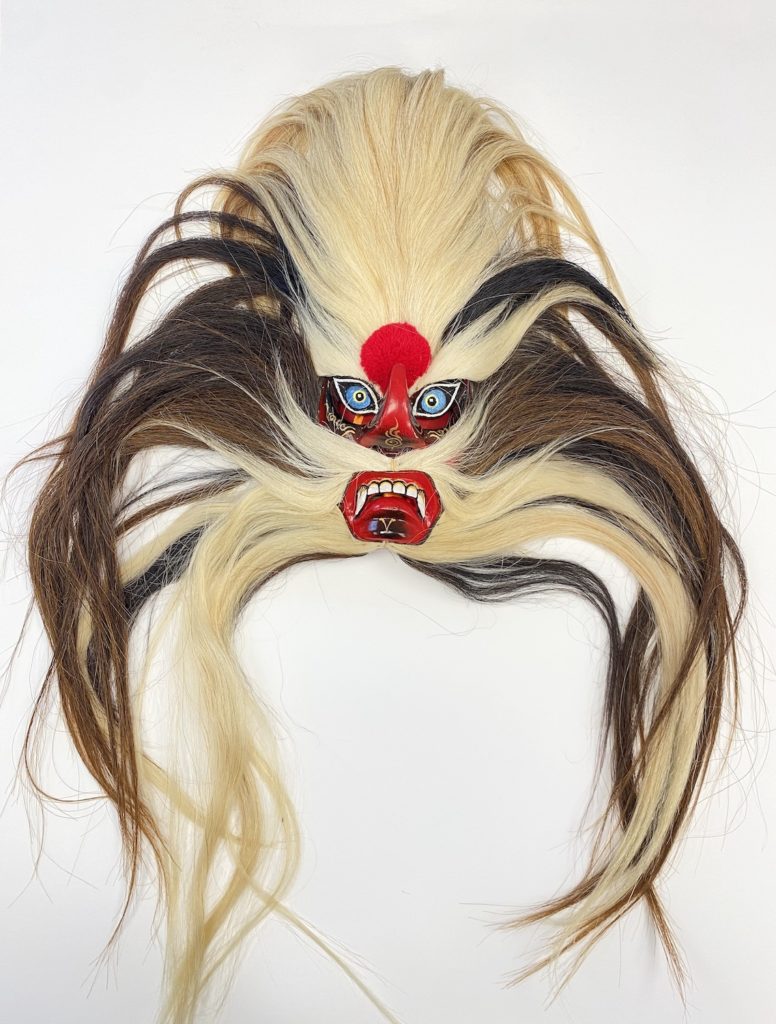
“Bujang Ganong” - Reyog Ponorogo Dance Mask
Traditional mask from Ponorogo, East Java, Indonesia.
“Bujang Ganong” is one of the central figures in the traditional Reyog Ponorogo dance. The dancers are called “Ganongan” and wear the “Ganong” masks. The characteristics of the “Ganong” Mask are that the teeth are flat and have no fangs, like Kala, with a bent nose rising up and the shape of the eyes wide and bulging. With a dominant red color for his face. For his hair, beard, and mustache using black or white horsehair manes.
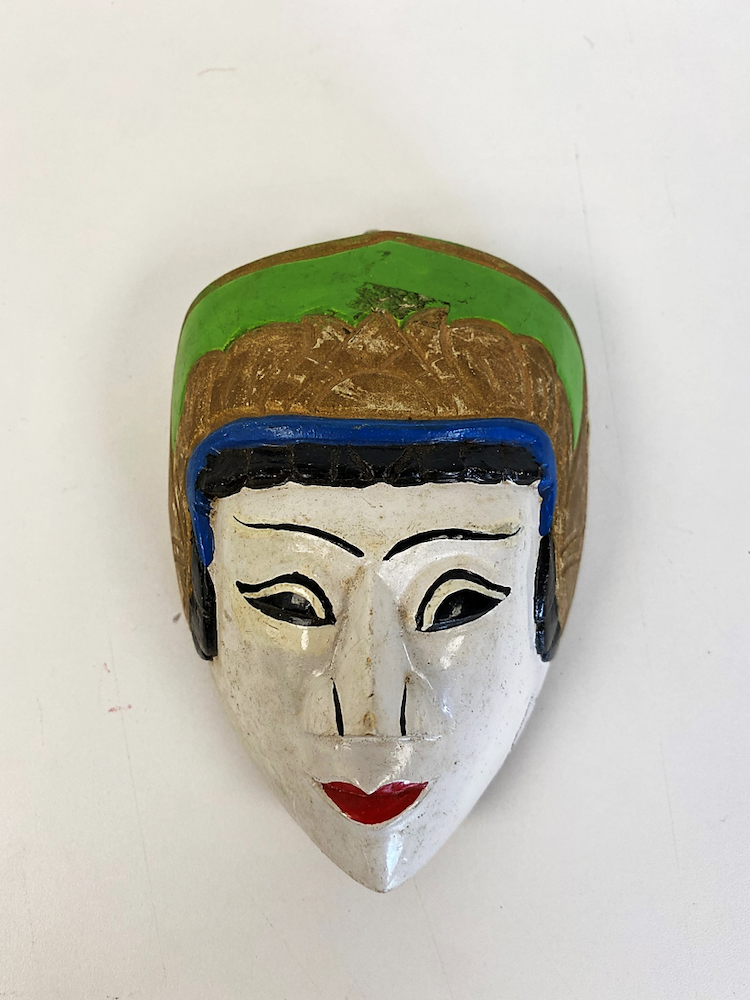
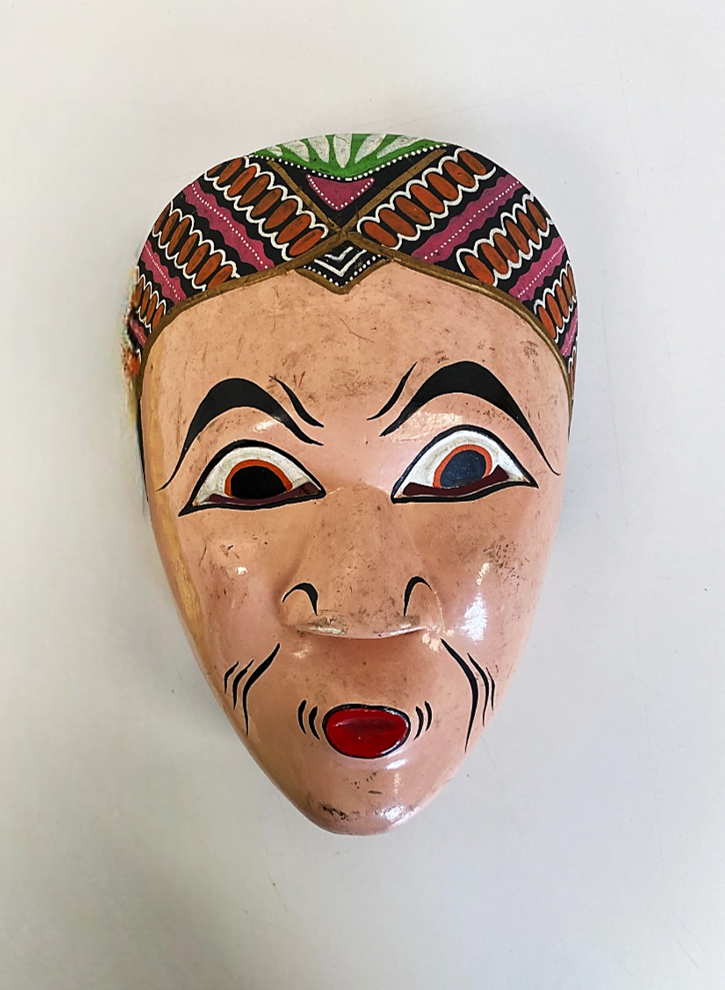
Javanese Mask
Originated from Java, Indonesia. The mask is made of a wood and is usually handcrafted using small pocket knife. The headband is a symbol of the Javanese masks. It is then painted with different vibrant colors. The mask displayed has a pair of crescent, winged eyes, a long pointed nose and pursed red lips.

